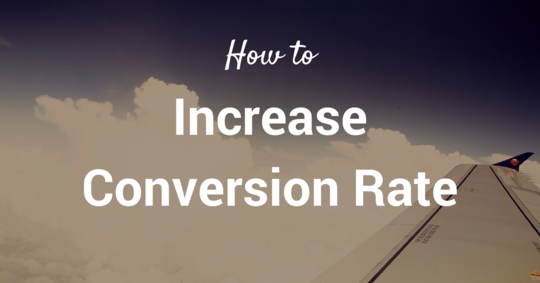12 Steps to Increasing Conversions by 25%
If your goal is more conversions, there are steps you can take right now to make that goal a reality. The good news is, most of these actions don't don't require any investment other than time. Here are 12 tips that can help you achieve as much as 25 percent more conversions.
1. Use Video Explainers on Your Landing Pages
According to Unbounce, video leads to more conversions by keeping people on your landing pages for a longer amount of time, and by boosting trust through the humanization of your business. Add a CTA to your video and use people, characters or imagery in the video to point to your page's conversion goal.
2. Set Videos to Autoplay
Websites that automatically play videos can annoy visitors by slowing browsing or bombarding the visitor with a barrage of sound they weren't expecting. The one exception is landing pages. You have so little time to hook your visitors, you can't waste even a moment hoping your visitors will hit play.
3. Make Your Calls to Action Stand Out
Create your CTA buttons using contrasting colors so that they stand out from the rest of the page. Place them above the fold and have people or objects in surrounding images point toward them.
4. Create Consistency Across Channels
Your theme, images, fonts and layouts should be consistent across channels -- online and off. Unify the design of online ads, landing pages and social pages. But also make sure physical elements like your shipping label template and business cards unmistakably project your brand.
5. Create Unique Landing Pages
Landing pages should be designed to convert visitors from just one entry point. Create unique landing pages for Facebook, Twitter, email, organic, PPC and every other entry point. If not, the design of your landing pages will not match the ad that your visitor clicked to get there.
6. Tailor Your Value Proposition
Make sure your value proposition matches the target. On your social LPs, for example, speak to visitors who are coming from the top of the funnel and who may not know much about your brand. On your PPC pages, remember that you're trying to entice people coming from the other end of the funnel.
7. Repeat Your Ad's Promise on Landing Pages
Reassure your visitors that they've landed in the right place by repeating the central promise of your ad on your landing pages. If your ad says "20 percent off shoes," use the same language in your LP's headline.
8. Include a Phone Number
A phone number reassures your visitors that they will be able to contact someone if there is a problem, that there is a human being behind the business, and that they aren't giving their information to a fly-by-night website.
9. Include a Free Trial
A free trial projects confidence in your product, and it also works to alleviate the natural hesitancy of buyers who are not yet sure. When you offer visitors a 7-day trial, they can commit knowing that they will still have time to think about it even after they complete the purchase.
10. Conduct A/B Testing
Test variable headlines, images and most importantly, CTA buttons. Monitor the results and let your audience choose the ones that stick. Results are the only thing that matter -- leave emotion out of the equation.
11. Include Social Testimonials
Testimonials don't carry as much weight as they used to because anyone can fabricate them. But social testimonials -- screenshot evidence of glowing tweets or other social posts -- prove that previous buyers were satisfied after purchasing.
12. Ask for a Share on the Way Out
Finally, use your confirmation pages as an opportunity to turn buyers into brand ambassadors by asking them to share their purchase experience on social media. People across every demographic are influenced by positive social reviews from their peers.
You don't have to revamp your entire social strategy to achieve big conversion gains. Coordinate your social ads with strong supporting channels like landing pages. Unify your branding, use video wherever you can and test your results against variables.
This guest article was written by Nick Rojas.


